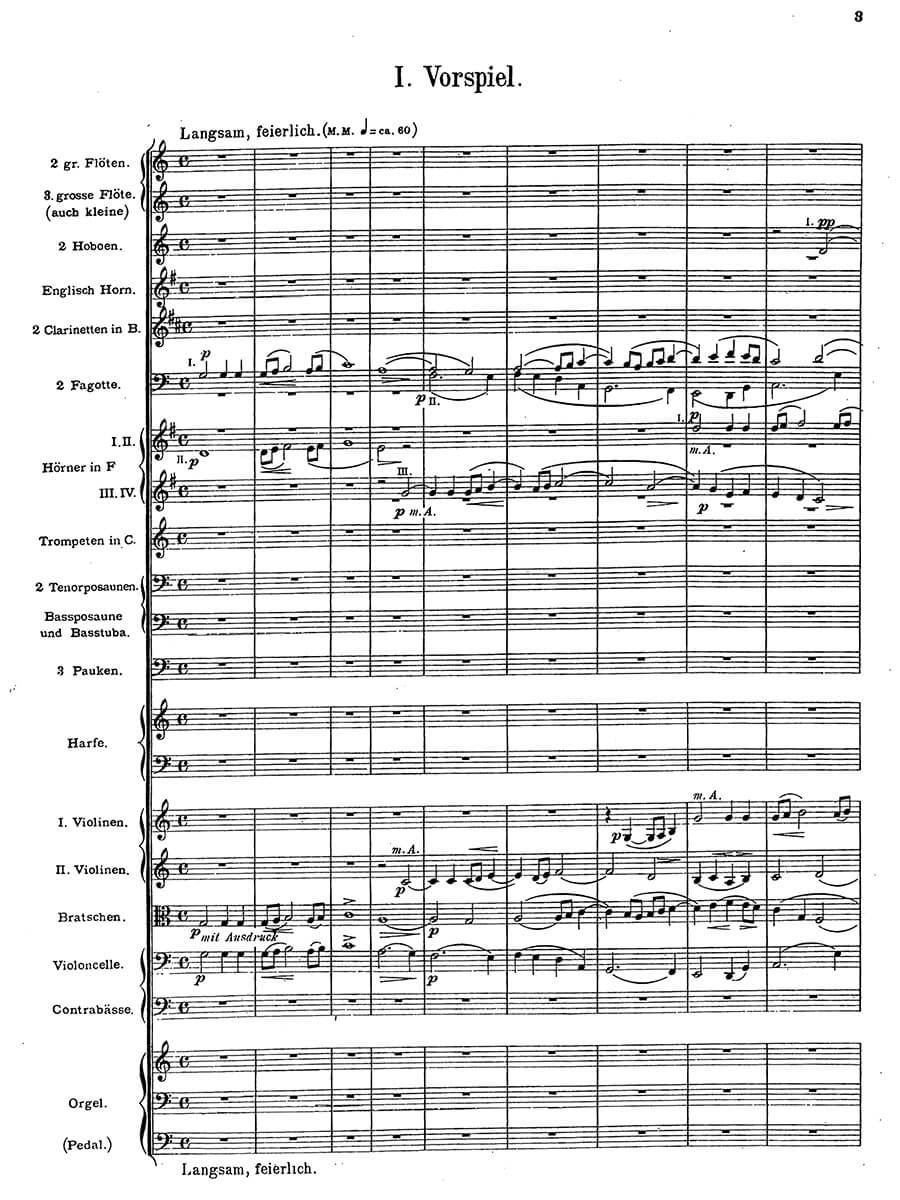Ein Weihnachtsmysterium op. 31 for soli, choir and orchestra (after words from the Bible and plays of the people / German text)
Wolfrum, Philipp
46,00 €
Preface
Philipp Wolfrum – Ein Weihnachtsmysterium op. 31
(b. Schwarzenbach am Wald, 17. December 1854 – d. Samedan/Upper Engadine, 17. December 1854 – 8. May 1919)
after words from the Bible and plays of the people
for soli, choir and orchestra
Preface
Philipp Wolfrum is remembered today primarily as the founder and choirmaster of the Heidelberg Bachverein, an interpreter of works by Johann Sebastian Bach, and a musicologist. However, it is usually overlooked that Wolfrum was also active as a composer and enjoyed an extensive musical education. Born in Schwarzenbach am Wald in Franconia in 1854, Wolfrum learned to play the organ as a child from his father, a cantor. He attended the teachers’ seminary and worked as a teacher for a few years before taking a two-year leave of absence in 1876 to study at the Royal Academy of Music in Munich on a scholarship. Wolfrum received extensive study in organ playing with Josef Gabriel Rheinberger, choral singing and conducting with Franz Wüllner, and piano with Karl Bärmann. He also received composition lessons from the former, from which he graduated with top marks. After two years of study, Wolfrum again devoted himself to his work as a teacher in Bamberg. During this time he wrote his first composition, a sonata for organ, which was printed in 1879 as op. 1. In 1884 Wolfrum became an assistant music teacher at the theological seminary of the university in Heidelberg as well as organist and music director at the university church. A year later – by then he had also become head of the young Akademischer Gesangverein – he founded the Heidelberg Bachverein. In 1888 he was appointed associate professor of musicology, and in 1891 he submitted his dissertation to the University of Leipzig. By then Wolfrum was composing songs, choral works, organ works, and chamber music. This was followed in 1886 by Wolfrum’s first choral-symphonic work, Das große Halleluja (The great Halleluja) op. 22 for mixed choir and orchestra. In 1898 he turned to an even larger form: the oratorio.
Even though the contents of the Weihnachtsmysterium (Christmas mystery) are taken from the Bible – the Christmas story is told from the Annunciation of the Angel to the Adoration of the Three Kings – a closer look reveals that this is not an ordinary oratorio. The term “oratorio” is also found in Wolfrum’s work only under quotation marks. For unlike traditional oratorios, there is also the element of drama and action here. The composer himself wrote a one-page preface to the score in which he calls for “living pictures”, in other words, pantomimes, scenery, a stage with curtains and lighting. His suggestions regarding the depiction of individual numbers can also be found there. The musical apparatus should be placed invisibly for the audience, possibly on a gallery. The choice between church and concert hall as a performance venue is left to the performers, as is the option to have the scenes performed by individual performers instead of the soloists. These precise stage directions, together with the desire for an invisible orchestra, are not coincidentally reminiscent of Richard Wagner, whose operas have had a strong influence on Wolfrum since his student days. The project was prompted by the carol Maria an der Krippe (Mary at the manger), which Wolfrum found in the book Christmas Plays and Songs from Southern Germany by Karl Weinhold and liked extraordinarily. It was to form the center of a larger dramatic work that Wolfrum now wanted to compose. Wolfrum put together the libretto, combining Bible texts with folk and church songs and Christmas plays. The title Christmas mystery, which goes back to the medieval mystery plays, also refers to the model of the latter. On certain feast days, Bible passages were read aloud with distributed roles, and later costumes and scenery were added. Apart from the general revision of some texts, he also wrote some sections himself – also following Wagner’s example. …
Read full preface / Das ganze Vorwort lesen> HERE
Score Data
| Edition | Repertoire Explorer |
|---|---|
| Genre | Choir/Voice & Orchestra |
| Printing | Reprint |
| Pages | 227 |
